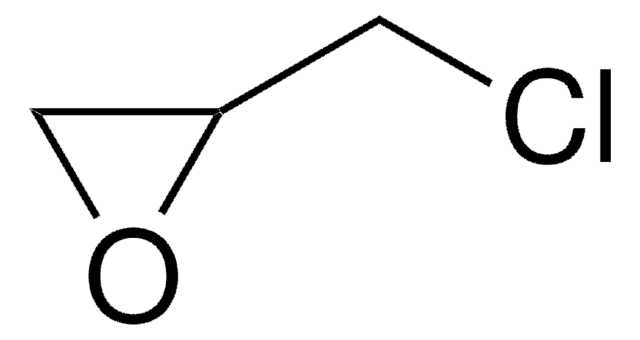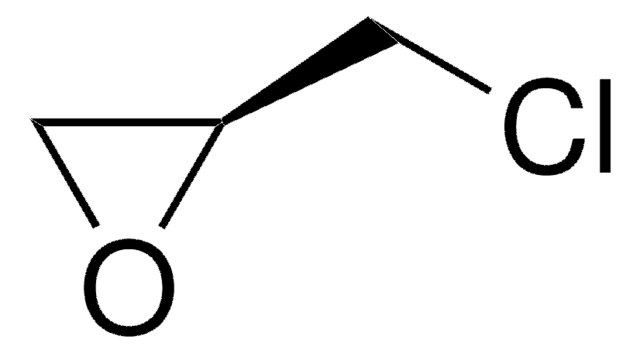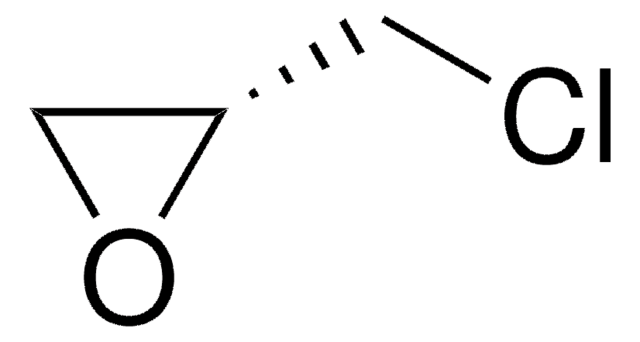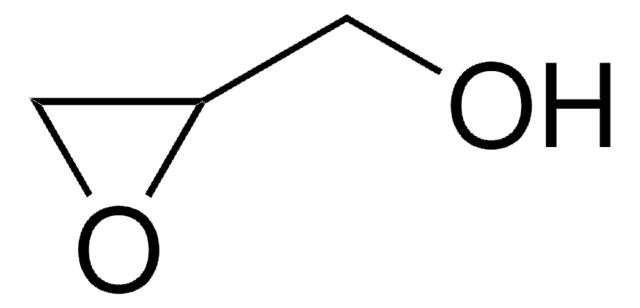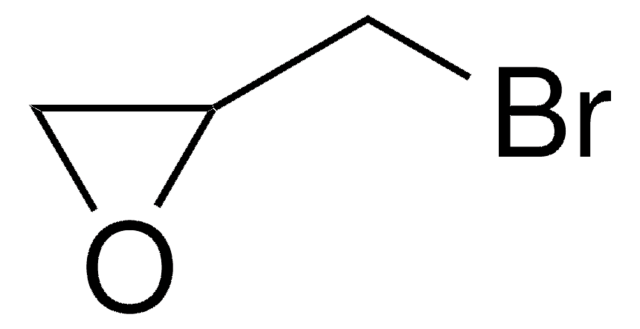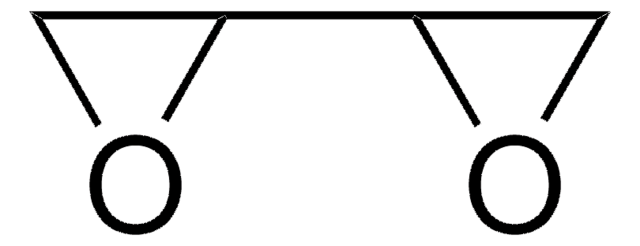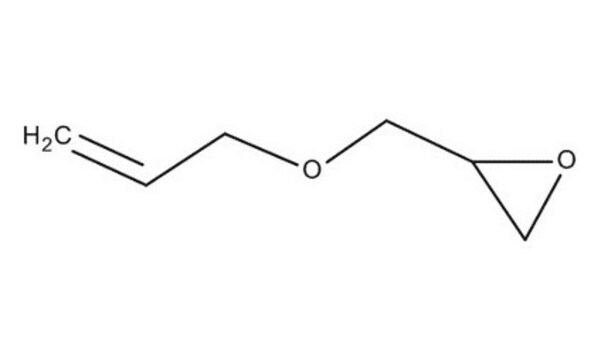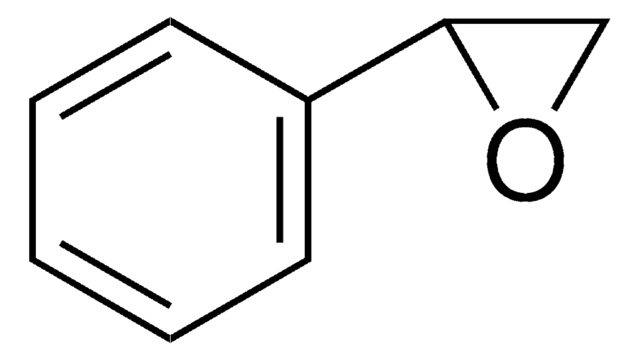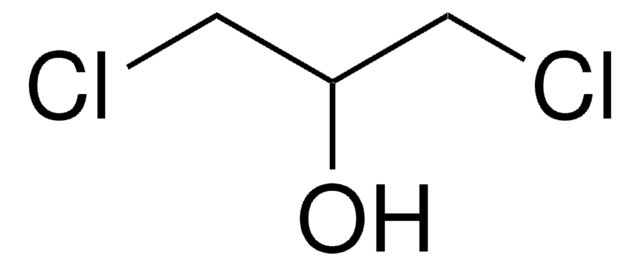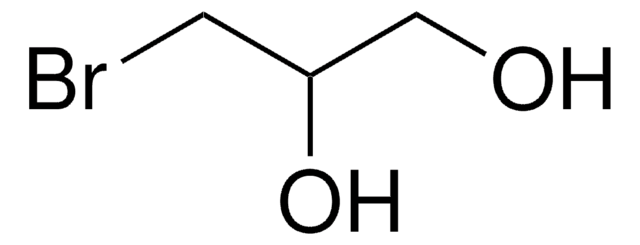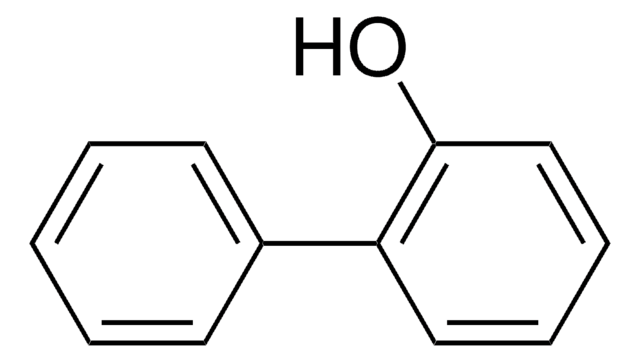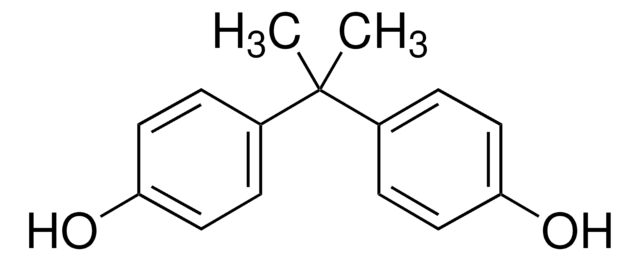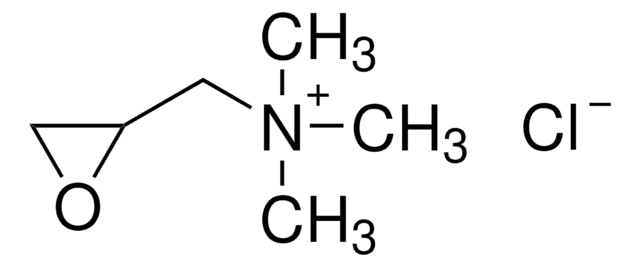8.03296
Epichlorohydrine
for synthesis
Synonym(s):
Epichlorohydrine, 1-Chloro-2,3-epoxypropane, 2-Chloromethyl oxirane, 2,3-Epoxypropyl chloride
About This Item
Recommended Products
vapor pressure
16.5 hPa ( 20 °C)
Quality Level
assay
≥99.0% (GC)
form
liquid
autoignition temp.
385 °C
potency
90 mg/kg LD50, oral (Rat)
515 mg/kg LD50, skin (Rabbit)
expl. lim.
3.8-21 % (v/v)
mp
-57 °C
transition temp
flash point 28 °C
solubility
65.9 g/L
density
1.18 g/cm3 at 20 °C
storage temp.
2-30°C
SMILES string
ClCC1OC1
InChI
1S/C3H5ClO/c4-1-3-2-5-3/h3H,1-2H2
InChI key
BRLQWZUYTZBJKN-UHFFFAOYSA-N
Application
- Water-insoluble β-cyclodextrin–epichlorohydrin polymers for removal of pollutants: This review article discusses the use of β-cyclodextrin–epichlorohydrin polymers in sorption processes to remove pollutants from aqueous solutions (N Morin-Crini, P Winterton, S Fourmentin, 2018, Progress in Polymer Science).
- Eco-efficiency improvements in the propylene-to-epichlorohydrin process: This research provides an analysis of improving the eco-efficiency of the propylene-to-epichlorohydrin production process, which is crucial for industrial applications like windmill blade manufacture (Ł Madej, AA Kiss, 2023, Journal of Chemical Technology & Biotechnology).
Analysis Note
Density (d 20 °C/ 4 °C): 1.178 - 1.182
Identity (IR): passes test
signalword
Danger
Hazard Classifications
Acute Tox. 3 Dermal - Acute Tox. 3 Inhalation - Acute Tox. 3 Oral - Carc. 1B - Eye Dam. 1 - Flam. Liq. 3 - Skin Corr. 1B - Skin Sens. 1
Storage Class
3 - Flammable liquids
wgk_germany
WGK 3
flash_point_f
82.4 °F
flash_point_c
28 °C
Certificates of Analysis (COA)
Search for Certificates of Analysis (COA) by entering the products Lot/Batch Number. Lot and Batch Numbers can be found on a product’s label following the words ‘Lot’ or ‘Batch’.
Already Own This Product?
Find documentation for the products that you have recently purchased in the Document Library.
Customers Also Viewed
Our team of scientists has experience in all areas of research including Life Science, Material Science, Chemical Synthesis, Chromatography, Analytical and many others.
Contact Technical Service